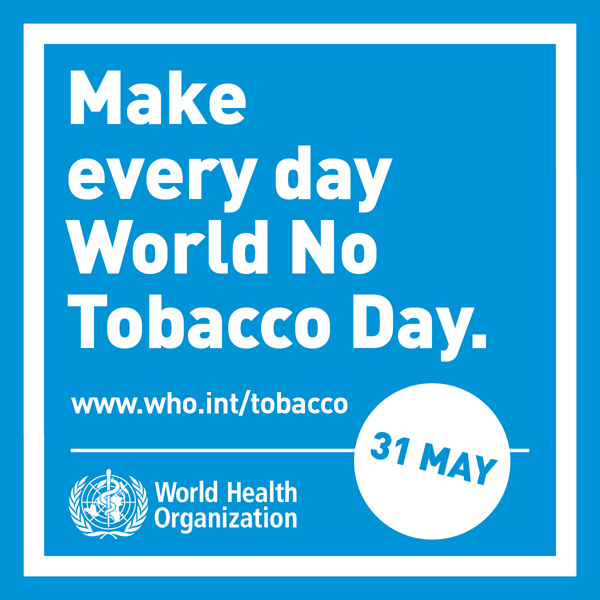May 31 is “World No Tobacco Day” – an annual event organized by the World Health Organization to highlight the health dangers of tobacco use and tobacco control policies that help people quit.
The focus of this year’s World No Tobacco Day is global collaboration to end the illicit trade of tobacco products. Research finds the illicit market for tobacco products may account for one in every 10 cigarettes smoked worldwide. However, there is overwhelming evidence that almost every illicit cigarette starts as a legal one, and that the tobacco industry itself is often complicit in illegal trade. Illicit tobacco trade is not only troubling from a health perspective, but this illicit trade also results in governments losing tax revenue while tobacco companies increase their bottom line.
Tobacco companies falsely claim that strong tobacco control policies are responsible for increases in illicit trade. Actually, the opposite is true. The best way to combat the illicit tobacco market is to intensify efforts to enact policies that we know work to reduce tobacco consumption of all products, legal and illegal. These policies include consistently and significantly increasing tobacco taxes, enacting comprehensive workplace smoke-free laws that include restaurants and bars, requiring graphic warning labels on packaging and restricting tobacco marketing and advertising.
While illicit tobacco trade isn’t as rampant in the U.S. as it is elsewhere in the world, our country has more work to do to pass strong tobacco control laws that can also help combat illicit trade. For example, the average state cigarette tax is only $1.54 and the federal cigarette tax is a meager $1.01. Yet, we know for every 10 percent increase in the price of a pack of cigarettes decreases youth smoking by 6.5 percent and overall consumption by 4 percent. For the past two years, the president’s budget proposal has included a 94-cent increase in the federal cigarette tax and several states have considered tobacco tax increases this legislative session. However, we won’t see the benefits of tax increases in lives saved and reduced health care costs unless they are made a reality by successfully passing these laws.
We’re also waiting for graphic warning labels. Congress included a provision in the Family Smoking Prevention and Tobacco Control Act requiring the FDA to develop and require graphic warnings that cover 50 percent of the front and back of all cigarette packs. The FDA issued proposed graphic warnings in 2011, which were immediately challenged in court by the tobacco industry. The industry was unfortunately successful at stopping implementation of those graphic warnings in 2012. The FDA has gone back to the drawing board, and nearly three years later we are still waiting for graphic warning labels. We’ve fallen behind the 77 countries and territories that have implemented graphic warning labels to date and have consequently seen reductions in smoking and fewer kids becoming new smokers.
Another way to restrict the illicit trade of tobacco products is the implementation of a track and trace system independent of the tobacco companies to monitor the industry’s manufacture and sale of these products. Congress mandated in the Family Smoking Prevention and Tobacco Control Act that FDA establish a national track and trace program for this purpose, and ACS CAN and its public health partners have called on the FDA to implement this expeditiously.
To learn more about illicit tobacco trade and the steps we need to take to fight the tobacco epidemic globally, visit the American Cancer Society’s website, tobaccoatlas.org.
By enacting strong tobacco control policies at all levels of government we can not only help deter illicit trade, but also save lives by helping people quit and keeping kids from starting a deadly habit. While we’ve made progress in reducing tobacco consumption, 18 percent of adults still smoke in the U.S. and tobacco use remains the most preventable cause of death in our country. If we don’t take further action, tobacco will kill one billion people globally this century. This World No Tobacco Day let’s vow to redouble our efforts to combat the tobacco epidemic.



